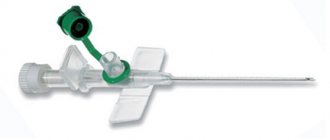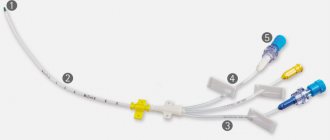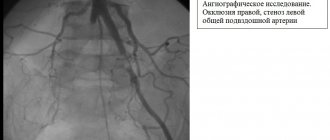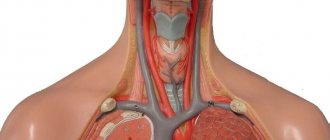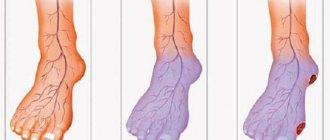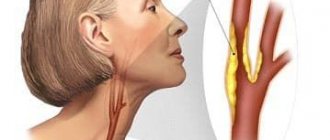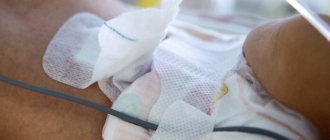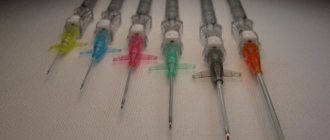Installation of a venous port for long-term access to the subclavian vein very conveniently solves the problems of long-term infusions, which is especially important in modern chemotherapy. In medical practice, for the successful treatment of a number of diseases, the patient requires long-term intravenous administration of drugs: antibiotics, chemotherapy drugs, nutrient solutions, painkillers and monitoring of blood counts. In many public clinics in our country, a peripheral or central venous catheter is still used for this purpose. Not only are these devices outdated, they bring great inconvenience to the patient, reduce the quality of life, but with prolonged use they have a number of complications.
In our article we will talk about infusion port systems and their installation. Frequent punctures of peripheral veins and the administration of anticancer drugs can lead to serious problems over time and limit the options for further treatment. Very often, complications after punctures and installation of peripheral catheters include the entry of an antitumor drug into the surrounding soft tissue, the development of chemical phlebitis, and obliteration (closure) of the lumen of blood vessels.
In the last decade, innovative devices have been introduced into our practice that are installed in the patient’s body for venous access for the purpose of long-term intravenous infusions. These are special implantable port systems that have a huge advantage over classical infusion methods. The port is a special box with a membrane made of titanium alloy, inert to the body. This box is connected to an intravenous catheter, inserted under X-ray control into the subclavian vein. The port can be used not only for infusions of chemotherapy drugs, but also for drawing blood for analysis, administering any other medications and parenteral nutrition.
Installation of port systems at the Innovative Vascular Center
One of the most important conditions for chemotherapy is the possibility of regular and safe intravenous administration of drugs.
The venous ports implanted at the Innovative Vascular Center are the best replacement for frequent punctures using peripheral or subclavian catheters for patients who require long-term and regular chemotherapy or other frequent long-term intravenous drug administration (intensive care unit patients). Venous ports solve a lot of problems inherent in traditional catheterization methods and provide maximum comfort and quality of life.
Our clinic has mastered and successfully used the technology of installing port systems under X-ray control. The operation takes about 30 minutes and does not require hospitalization. We implant modern venous ports into the subclavian vein under local anesthesia. Puncture of the vessel is carried out under ultrasound control, all further manipulations are performed under X-ray visualization. This approach allows you to avoid complications during this procedure. Local anesthesia is sufficient for complete pain relief for this high-tech operation.
Catheterization of peripheral veins
Just about venous catheterization.
Vein catheterization is one of the most necessary and used in hospital techniques for rapid and permanent access to the child’s circulatory system. The advantages of venous catheterization over other methods of accessing the circulatory system are a lower risk of infection, increased safety, the ability to quickly administer drugs in various combinations, nutritional support, infusion therapy, and monitoring of venous pressure.
Vein catheterization is a procedure that requires significant training from medical personnel. The doctor and nurse must fully understand the essence and methodology of the procedure, as well as complications that may arise during or after the procedure.
Overall, complication rates range up to 15%, with mechanical complications occurring in 5-19% of patients, infectious complications in 5-26%, and thrombotic complications in 2-26% of patients. All of these complications are potentially life-threatening, therefore, as mentioned above, medical personnel must have extensive experience in this area.
In most cases and first of all, peripheral venous catheterization is attempted, since the peripheral veins are the most accessible.
Catheterization of peripheral veins.
A peripheral intravenous (venous) catheter is a device inserted into a peripheral vein and providing access to the bloodstream during the following intravenous procedures:
- Administration of drugs to patients who cannot take drugs orally, or when it is necessary to quickly and accurately administer the drug in an effective Concentration (especially when the drug can change its properties when taken orally);
- Providing frequent courses of intravenous therapy to chronically ill patients;
- Injection of drugs, such as antibiotics;
- Blood collection for clinical studies;
- Access to the bloodstream in emergency conditions (fast venous access if it is necessary to simultaneously carry out emergency infusions of drugs or high speed administration of solutions);
- Transfusion of blood products;
- Parenteral nutrition,
- Rehydration of the body,
Administration of radiological contrast agents for computed tomography (CT) or magnetic resonance imaging (MRI).
Peripheral catheters vary in color based on lumen diameter and length. Well-chosen venous access is essential to successful intravenous therapy. When selecting a catheterization site, consideration should be given to patient preference, ease of access to the puncture site, and suitability of the vessel for catheterization.
CRITERIA FOR SELECTION OF A VEIN:
- First, the distal veins are catheterized.
- Preferably, vessels are large, soft and elastic to the touch.
- It is better to use straight veins that match the length of the catheter.
The most commonly catheterized are the lateral and medial saphenous veins of the arm, the intermediate veins of the elbow, and the intermediate veins of the forearm. Sometimes the metacarpal and digital veins are used if catheterization of the above veins is impossible.
When choosing a catheter, you must focus on the following criteria:
- Vein diameter
- Required speed of solution introduction;
- Potential residence time of the catheter in the vein;
- Properties of the injected solution.
The material from which the catheter is made is essential for intravenous therapy. When choosing equipment for venous catheterization, preference should be given to modern Teflon and polyurethane catheters. Their use significantly reduces the incidence of complications and with high-quality care, the service life of the catheter is much longer.
DAILY CATHETER CARE!!!
It must be remembered that maximum attention to the choice of equipment, the process of placing a catheter and high-quality care for it are the main conditions for the success of the treatment and the prevention of complications. It is necessary to strictly follow the rules for using the catheter.
- Each catheter connection is a gateway for infection.
- Repeated hand contact with the equipment should be avoided.
- Change sterile plugs frequently and never use plugs whose inner surface may be infected.
- Immediately after administering antibiotics, concentrated glucose solutions, and blood products, the catheter should be flushed with a small amount of saline.
- To prevent thrombosis and prolong the functioning of the catheter in the vein, it is recommended to additionally flush the catheter with saline during the day, between infusions.
- It is imperative to monitor the condition of the fixing bandage and change it if necessary.
- Regularly inspect the puncture site for early detection of complications. If swelling, redness, local fever, obstruction of the catheter, leakage, or pain during drug administration occur, the doctor should be notified and the catheter should be removed.
- When changing an adhesive bandage, do not use scissors. There is a danger for the catheter to be cut off, causing the catheter to enter the bloodstream.
- Information about the volume of drugs administered during the day and the speed of their administration is regularly entered into the patient’s observation chart to monitor the effectiveness of the infusion therapy.
Despite the fact that peripheral venous catheterization is a significantly less dangerous procedure compared to central venous catheterization, it carries the potential for complications, like any procedure that violates the integrity of the skin. However, most complications can be avoided thanks to the nurse's good manipulation technique, strict adherence to the rules of asepsis and antisepsis, and proper care of the catheter.
It is important to remember that all of the above responsibilities for caring for the catheter fall on both the medical staff and the adults with whom the child is in the hospital!
Advantages of port systems
- Implantable port systems provide reliable and safe access for intravenous infusions for many years.
- Port installation is performed on an outpatient basis and is painless for the patient.
- A small incision in the subclavian region heals quickly and does not require the removal of sutures.
- The light weight of the port creates convenience for the patient - after the procedure is completed and the needle is removed, the patient can easily return to an active lifestyle: shower, bath, play sports, swim in the pool, ski and even scuba dive.
- Excellent biocompatibility – minimal risk of port rejection.
- The titanium design of the camera in a plastic housing ensures long-term use and inertness of the port in tissues.
- A dense silicone membrane of large diameter helps to increase the service life of the device - the access begins to work from the first hours after implantation and functions up to 10-14 years.
- The port system does not contain latex, PVC or phthalates, which reduces the risk of infection.
Venous catheter placement and care
A venous catheter is inserted into a peripheral vein without anesthesia. Placement of a central venous catheter is always performed under sterile conditions using local or general anesthesia. Proper care of the venous catheter allows you to avoid complications such as infection, embolism, bleeding and others. Central venous catheter care includes the following principles:
- compliance with hygiene rules;
- maintaining dryness and cleanliness at the catheter entry site;
- regular inspection of the catheterization site for inflammation, swelling, and tissue damage;
- compliance with all rules for using a catheter and absolute sterility when administering medications.
Possible complications
Complications with this operation are extremely rare. The subclavian area is examined by the attending physician before each injection; at the first signs of inflammation of the port system for chemotherapy, measures must be taken to prevent suppuration. You can only prick the membrane with a special Huber needle, observing the rules of asepsis. There is a possibility of the following problems:
- Wound suppuration after installation of a venous port system
- Thrombosis of the subclavian and superior vena cava
- Catheter kinks and system failure
- Brachial plexus injury with arm pain
In our practice, such complications were not encountered.
How to choose a venous catheter?
Catheters for providing venous access differ in size, length, and throughput. For ease of identification, catheters are painted in different colors, by which their parameters can be easily determined. When choosing the size of the cannula, factors such as the size of the vein itself, the purpose of the catheter, and the physiological characteristics of the patient are taken into account. The choice of peripheral venous cannula depends on the location of the vein being catheterized. If long-term access to one of the central veins is necessary, doctors recommend implanting an infusion port in the patient. The U-PORT port system consists of a titanium injection port and a catheter that delivers medications from a reservoir to the patient's bloodstream. Located under the skin, the port minimizes the risk of infection and provides the patient with comfort and unrestricted motor activity.
Intravenous catheter with additional port made in India
Intravenous catheters are intended for catheterization of peripheral veins for the purpose of long-term or short-term infusion-transfusion therapy. Material: polypropylene, medical steel, Teflon, polyacetal, high-density polyethylene, low-density polyethylene, silicone.
Intravenous catheter Polyflon or SoftCathe transparent intravenous catheter made of Teflon, central hole with atraumatic edges; four x-ray positive strips along the entire length of the catheter; pavilion with a luer-lock port for connecting an infusion line or syringe; bending wings. An additional port for instant injections with a non-return petal valve is located at the top of the catheter; Equipped with a standard Luer-lock connector.
Unified color coding of the catheter size “SoftCathe”
| Catheter size, (G) | Catheter outer diameter, mm (OD) | Int. catheter diameter, mm (ID) | Color code | Length, mm | Flow rate, ml/min |
| 14G | 2,0 | 1,7 | orange | 45 | 305 |
| 16G | 1,7 | 1,3 | grey | 45 | 200 |
| 17G | 1,5 | 1,1 | white | 45 | 142 |
| 18G | 1,3 | 0,9 | green | 45 | 95 |
| 20G | 1,1 | 0,8 | pink | 32 | 65 |
| 22G | 0,9 | 0,6 | blue | 25 | 36 |
| 24G | 0,7 | 0,5 | yellow | 19 | 23 |
Stiletto needle with a triangular oblique cut; transparent needle pavilion with a Luer-lock connector, equipped with two grooves for fixing the stylet with the catheter pavilion, finger rest; removable translucent plug on the Luer-lock connector.
An additional luer-lock plug made of opaque white plastic with a faceted outer surface is fixed on the needle pavilion plug. The catheter is closed with a protective transparent cap. Sterilization: individual blister packaging. Sterilization using ethylene oxide. Shelf life: 5 years.
, India (TM "SoftCathe" or "OneFlon") Global Medikit Limited, India (TM "Mediflon") Harsoria Healthcare Pvt. Ltd” , India (tm. “HEALFLON”) “La-med Healthcare Pvt. Ltd" , India (TM "La-med IV cannula") "SURU International PVT.LTD" , India (TM "SURUFLON") "Poly Medicure Limited" , India (TM "POLYFLON FEP" ") "Interpharma" , India (t.m. "EUROFLON")
Intravenous catheter (peripheral) with additional port of the river G16-22, price: 8.40 rub. Intravenous catheter (peripheral) with additional port of the river G 24, price: 9.40 rub. Intravenous catheter (peripheral) with additional port of the river G14 and G26, price: 11.40 rub.
INTRAVENOUS CATHETERS “Beromed” FOR PERIPHERAL VEINS with an additional port and fixing wings
Intravenous catheters “BEROMED” for peripheral veins with an additional port and fixing wings are used for long-term intravenous infusions. Specifications:
- The puncture needle is made of high-quality, thinnest surgical steel, which allows it to maintain strength with minimal wall thickness
- triple sharpening of the needle ensures atraumatic insertion
- the elastic surface of the catheter allows painless insertion of the catheter into the vein
- two built-in radiopaque strips
- integrated injection port "Luer" / "Luer-Lock" type "male" with non-return valve
- fixing wings allow you to securely secure the catheter
- color coding of the additional port plug allows you to visually determine the size of the catheter
- hydrophobic catheter plug prevents blood leakage, removable plug for quick closure of the catheter
- catheter material FEP (fluoroethylpropylene), sizes G 14, 16, 17, 18, 20, 22, 24, 26
- the entire product is made of materials with a high degree of biotolerance, sterile, pyrogen-free, non-toxic
- Individual packaging, easy to open, contains all the necessary information about the product.
Intravenous catheter with additional port “Beromed”, Germany
| Catheter size, (G), length, (inch) | Catheter outer diameter x length, mm | Color code | Flow rate, ml/min FEP | Flow rate, ml/min PUR |
| 14G – 1 3/4 | 2.1 x 45 mm | orange | 305 | 305 |
| 16G – 1 3/4 | 1.7 x 45 mm | grey | 200 | 200 |
| 17G – 1 3/4 | 1.5 x 45 mm | white | 142 | 142 |
| 18G – 1 3/4 | 1.3 x 45 mm | green | 95 | 95 |
| 20G – 1 1/4 | 1.1 x 32 mm | pink | 60 | 60 |
| 22G – 1” | 0.9 x 25 mm | blue | 36 | 36 |
| 24G – 3/4 | 0.7 x 19 mm | yellow | 23 | 23 |
| 26G – 3/4 | 0.62 x 19 mm | violet | 17 | 17 |
, Germany (t.m. “BEROCAN”) Venous catheter with additional port + wings, river. G 16-22, price: 9.60 rub. Venous catheter with additional port + wings, r. G 14-24, price: 11.40 rub.
Preparation for the procedure
Let's figure out what is needed to carry out the procedure. The quality of the injection depends not only on knowledge of the intricacies of administering the medicine into a vein, but also on compliance with all conditions for preparing the patient and the workplace.
>Patient preparation
Our DoctorMos specialists initially exclude the possibility of developing an allergy to the drug. If you are hypersensitive to the composition, the injection can be fatal. Additionally, information about the patient’s meal times is clarified (since some drugs can be used on an “empty” or full stomach).
Workplace organization
A properly prepared work area reduces the risk of complications from injections by approximately 50%. Therefore, before starting manipulations, make sure that the location of the procedure meets the requirements:
- the presence of a special table and chair.
- if the injection is “severe”, a couch is needed;
- cushion or pad, objects are placed under the arm;
- a disinfectant for cleaning the hands of a nurse, as well as disinfecting an ampoule with medication;
- sterile container (for a syringe) and non-sterile (for waste materials);
- scissors and a special file for opening an ampoule of medicine;
- disposable syringe of the required volume;
- medicine;
- alcohol-soaked wipes;
- sterile medical gloves;
- medical tourniquet.
Setting up an intravenous injection begins with checking the readiness of the workspace and the expiration date of the medication.
